Are you curious about the features of jeans that makes it the iconic garment that it is?
When you look at jeans, what do you see? Some see rebellion, some see attitude, some casual style, some sloppiness, some arrogance, some friendliness, some friendship, some modesty, some revealing, some freedom, some youth, some just being cool and hip.
When a single piece of clothing brings on so many conflicting and unified emotions, there has got to be something unique about the sum of its parts. And what are these parts?; the parts and characteristics that lend the jeans the quality of an icon.
Jeans is very unique among all the other types of garments we have today. The totality of its different special characteristics makes it special with a capital J.
The Anatomy of Jeans – All the parts of your jeans named
- The Anatomy of Jeans – All the parts of your jeans named
- 1. Waistband
- 2. Belt loops
- 3. Leather labels /patch
- 4. Metal buttons
- 5. Fly & fasteners
- 6. Front curved pockets
- 7. Fifth pocket aka watch pocket
- 8. Rivets
- 9. Back pocket & decorative stitches
- 10. Back Yoke
- 11. Jeans Seam stitching and thread
- 12. Jeans Measurements
- 13. Bar tacking
- 14. Jeans Hem
- 15. Denim washes
- What is the commonly used seam stitch for jeans?
- What is the double stitched design on the pockets of jeans generally called?
1. Waistband
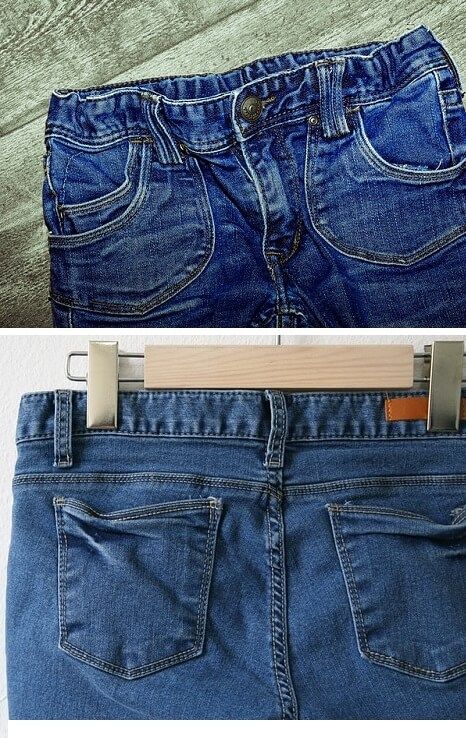
What is special about the waistband of jeans – pretty standard like that of any pants – just made of double layers of denim with the standard belt loops? You are wrong.
Do you know the new trend called triple waistband with three separate asymmetrically placed waistbands stacked one on top of the other, three buttons and a concealed zipper? If not, check it out here.
The standard jeans have a waistband with only one button above a zippered fly. Usually, they are designed to be near navel height, but high waisted and low waisted which go south and north of your body are equally favorites.
The most in-demand waistband is a contoured one in a stretchy material with spandex – this waistband is cut on a curve rather than as a straight line and does a great deal to make the waist look shapely. This waistband will have a higher back and curved front waist. They stay in place and fits you as if you are custom fitted.
The jeans waistband assumes importance when you think about shopping for jeans – when the waistband fits, the hips do not and when you get one that goes over the hips the waistband gaps. Is it jeans or your body?
I learned more on jeans waistbands from this article on fashion incubator.com
2. Belt loops
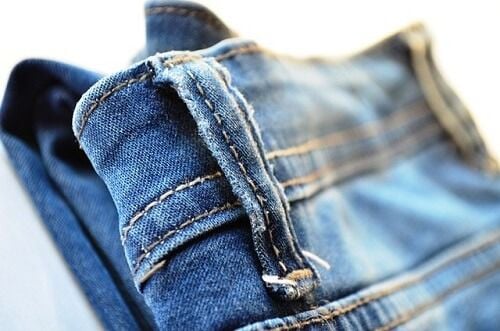
One of the basic elements of jeans that have not changed down the years of changing fashion – the loops that keep the belt on the waistband. They eliminated the need for suspenders and helped to properly fit the jeans on the wearer.
The only thing that varies about the belt loops is their numbers on jeans ; it can vary from 5 to 7, though 5 is the standard.
3. Leather labels /patch
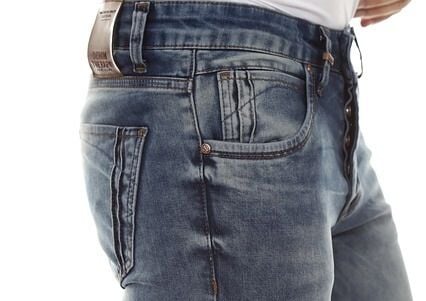
These are patches attached to the waistband on the backside of the jeans – these are not made of leather any more though originally it used to be.
Nowadays you will find faux leather patches as Leather is not practical because it might shrink and be damaged with the many washes during production as well as at the hands of the user.
They are there for proclaiming the brand of the jeans. Anyone seeing it is made aware of the name of the company which made it. The patch is also called jacrons, after the soft faux-suede material it is made of.
Other than the leather label, when you buy jeans you will find a hang tag, fabric care label with the product of origin and product ID tags, and size label inside.
A metal button is used to close the top of the fly of the jeans. It is a no-sew one – a two part stud button.The lower section pushes up through a hole made in the waistband of the denim and the top button is then joined onto this.
The metal button fastening the waistband on jeans is made of nickel. Higher brands use zinc alloy buttons as they are superior. Nickel allergy is not uncommon. The donut-shaped buttons with a hole in their center are the most commonly used jean button. The other one is the tack button with a flat front.
5. Fly & fasteners
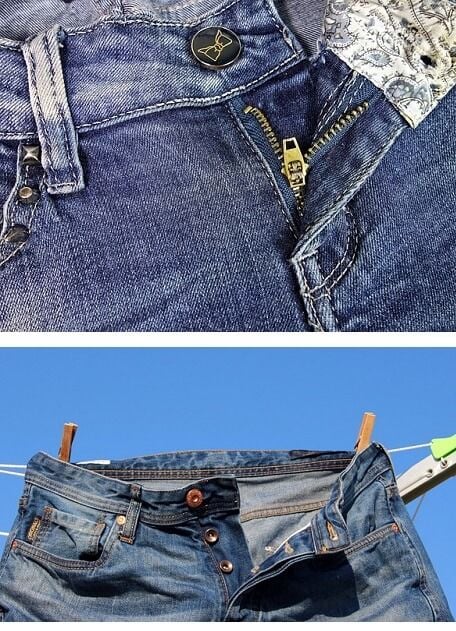
The front fly of jeans ( The front opening part of the middle of the jeans) is associated with sturdy metal zippers , atleast for me. But a button opening used to be the norm – I read it here.
The Great Denim Debate : Button Versus Zipper. There used to 5 metal buttons for the front fly
6. Front curved pockets
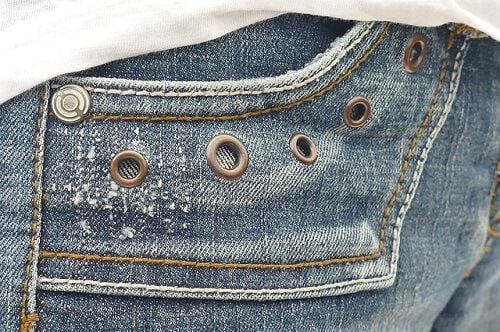
The jeans has a 5 pocket construction with three pockets in the front – out of this 2 are big ones with a curved shape.
7. Fifth pocket aka watch pocket

The front pocket on the left side of the jeans has a small pocket inside – it is called a watch pocket referring to the time when people kept their pocket watches on chains inside it. You can use it instead as a coin pocket or key holder ( alternative names). It is a constant in jeans so you might as well use it.
8. Rivets
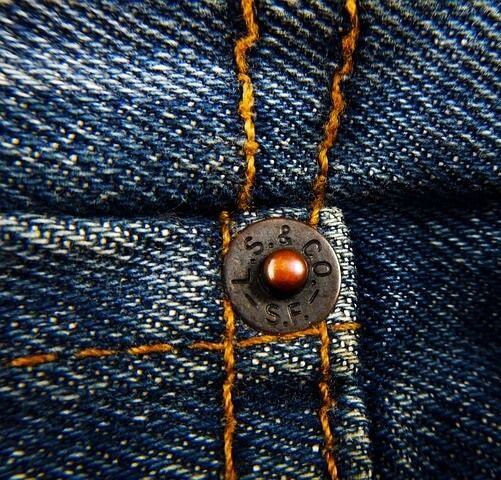
These are small copper things which look like the other half of a snap fastener. They look decorative when paired with the indigo blue of jeans but aesthetics was not the main consideration when John Davis decided to get a patent for this along with Levi Strauss in 1873.
Rivets help in reinforcing and strengthening the stress-bearing vulnerable points in jeans – that is places where there is a likelihood of tearing/ripping like the joining point of pockets.
Learn about attaching metal rivets here.
9. Back pocket & decorative stitches
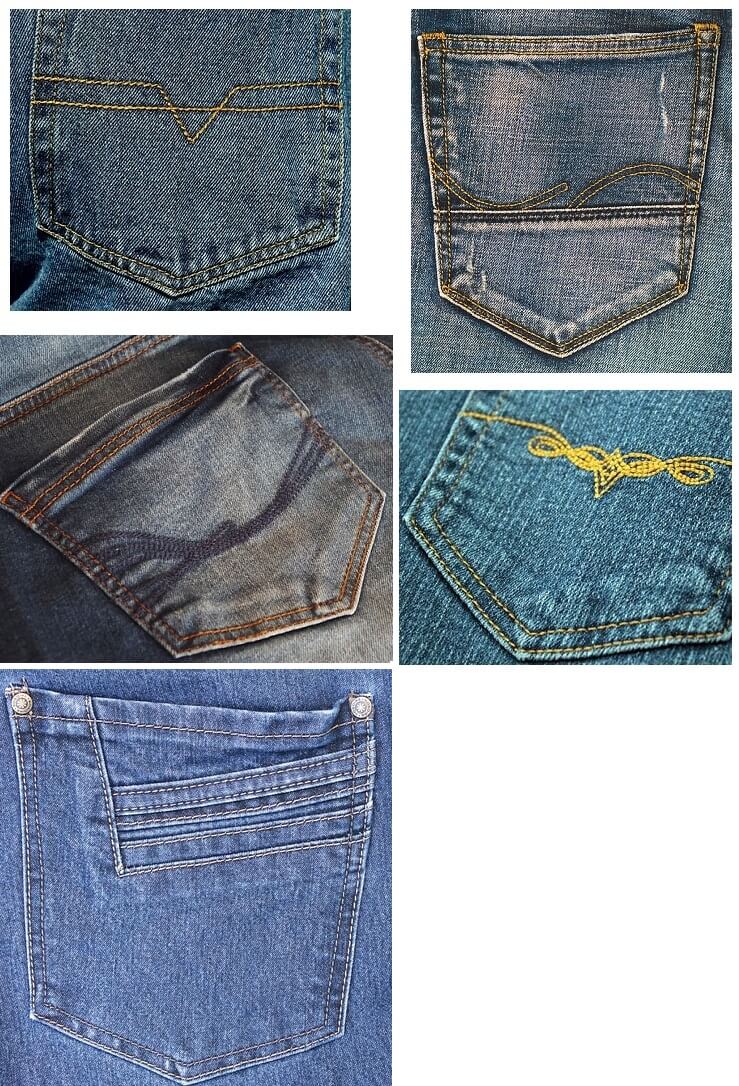
The first jeans and subsequent many had only one back pocket but now there are one each on the left and right sides on the back.
The back pockets usually have distinctive stitching embellishing them – these are mostly trademarked by brands.
For instance, the one on Levis with the bat shape is called Arcuate. It used to be added to join the lining to the pocket but now there is no lining but the attractive stitching remained.
10. Back Yoke

A yoke is a yoke – and on the back of jeans, it is many shaped. It can be straight, v shaped, sweet heart shaped.
You can have jeans with no yoke as well. The cut of the yoke gives some shaping to the jeans, hence designers do experiment with this. More pronounced the V shape in the back, curvier the shape of the jeans
11. Jeans Seam stitching and thread
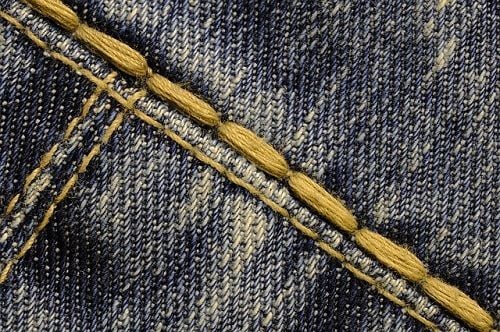
The jeans seams are stitched on the industrial sewing machine with a very strong lock stitch. The selvage of the denim fabric is kept intact on the seam edges to prevent fraying. Other fabric edges are overlocked.
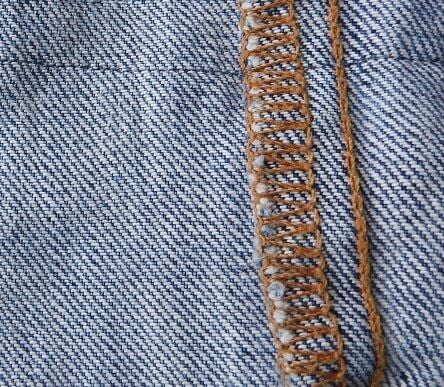
The topstitching on your jeans is usually done with an orange thread – it is usually a highly twisted very heavy cotton -polyester corespun thread which is durable and decorative. It was first used as it matched the color of brass rivets
12. Jeans Measurements
Crotch length is the distance from the top center front of the pants around to the top center back of the pants. Crotch depth/rise is the distance from waistline to the seat, as you sit on a chair. The outseam is the measurement along the length of the outside of a pair of pants from the top of the jeans to the bottom of the leg. Inseam is the measurement along the length of the inner leg, from the top of the inner thigh to the bottom.
You can find more details on this on the post 15 pant fitting terms
13. Bar tacking
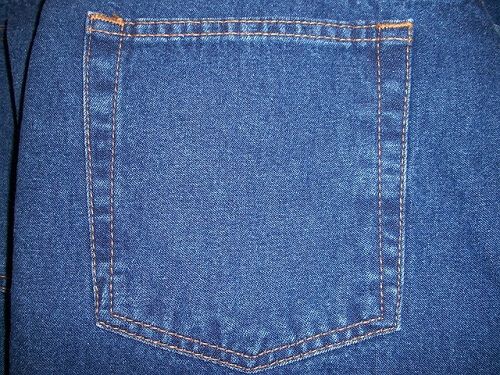
A bar tack is a type of stitching which consists of tight closely done zig zag stitching done on top of pockets and seams. It is made at points of high stress like crotch seams and pocket opening area.
14. Jeans Hem
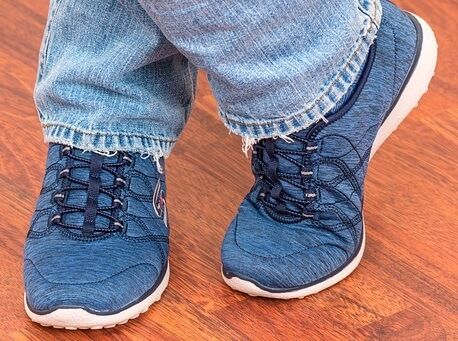
Jeans hem, the turned under finish used to finish the fabric edge on the leg opening in jeans is usually used as a neat finish though nowadays it is an anomaly to find neatly finished jeans hem. Most of them come distressed.
15. Denim washes
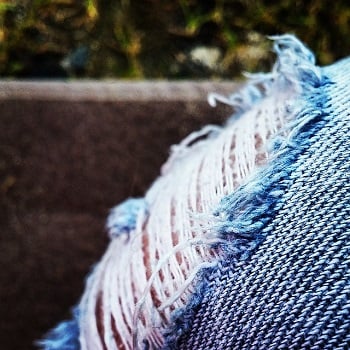
Your jeans undergo various wash processes after it is stitched. They are done to get a realistic faded effect which is popular as distressed finishes. Sandblasting, stone washing, Acid washing (Moon wash, Snow wash. marble wash), enzyme wash are some of the washes used – check out the post on Denim washes to learn more about these abd the 15 different ways of distressing jeans if you would like to do these at home.
What is the commonly used seam stitch for jeans?
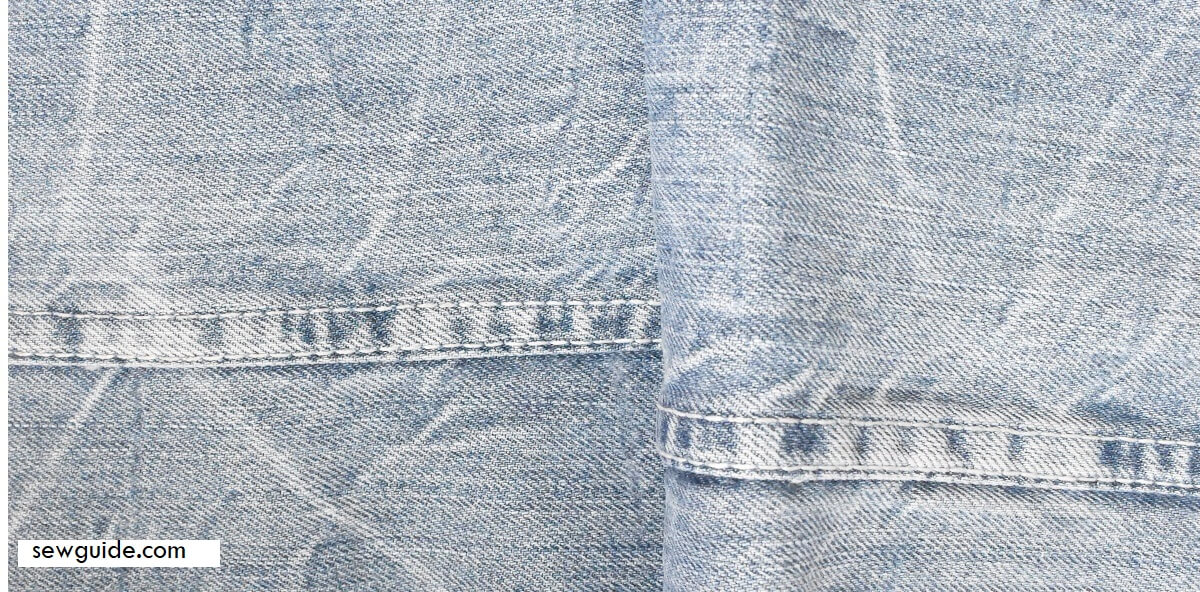
A flat fell seam is used to stitch the pant leg inseam and crotch seam of jeans – it is a very sturdy stitch with double line of stitching.
What is the double stitched design on the pockets of jeans generally called?
Arcuate ; This is the pattern fromed with double stitching on top of the back pockets of jeans. The most popular Arcuate design is the one in the shape of a batwing on Levi’s jeans.


Thank you for your brief pieces of information.
All raw materials that are used in jeans production
Thank you for so much info .I find it so fascinating to learn about things we often take for granted.
Hi June
Same for me too ; thanks for the comment